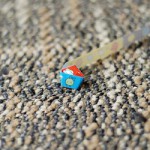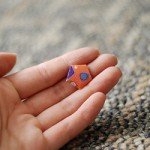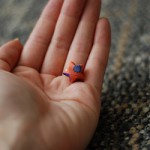“Use the left hand, and bend at the first joint of the thumb. Bend the right hand thumb in the same way, but cover the right hand thumb joint with your index and middle fingers. You can put your two thumbs together to form what looks like a full thumb, but your index and middle fingers are covering the joints of both thumbs. So it looks like you’re just covering your left thumb with two fingers. It looks natural to little kids. So when I start moving my right hand up, it looks like my thumb is getting pulled off or broken, right? And then, you know, I sometimes put some type of red thing in between the joints, like ketchup, and it looks like I’m bleeding. I mean, of course, we say before we do it, “Do not repeat this” in case you guys wanted to pull your thumbs off.”
My informant has done this trick many times for little children in order to entertain them. The first time he had seen it, he said, was when an adult had shown it to him in order to try and scare him or make him wide-eyed in wonder. I, myself, had first seen this trick done by my uncle who was trying to entertain my brother and me. The trick is more like a practical joke on children to fool them into thinking that it is possible to pull your thumb off and then reattach it later. I remember wondering for quite some length of time at how my uncle managed to pull his finger apart. The trick, while it means to keep children occupied for long periods of time, also seems to poke fun at children’s ignorance because it toys with their young minds while the adults and less naïve share a quiet laugh.








